You have probably read about it on the web. The hot thing right now in real estate is taking aerial images with UAVs (Unmanned Aerial Vehicles). Some times they are referred to as “drones”. Where do you begin when trying to put a camera in the air? Do you focus on aerial photos, aerial video or both? Let’s see what might be the best RC helicopter with video camera for real estate photography.
Although this site is geared toward real estate photographers, the information provided is valuable to anyone looking to take a camera into the sky with a RC helicopter/drone/quadcopter.
Get Your UAV License
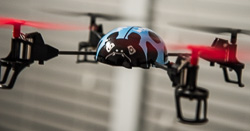 First and foremost, you need to get your UAV license. Don’t worry, it’s easy to pass the test. You will be grading it yourself! I frequently get asked what’s the best software available for practice flying drones/UAVs. I’ve tried software simulators on the computer (even with a real R/C transmitter) and they just don’t do a great job of preparing you for the real thing. My suggestion on how to give yourself an UAV license? Fly the grumpy beetle (Amazon aff link)!
First and foremost, you need to get your UAV license. Don’t worry, it’s easy to pass the test. You will be grading it yourself! I frequently get asked what’s the best software available for practice flying drones/UAVs. I’ve tried software simulators on the computer (even with a real R/C transmitter) and they just don’t do a great job of preparing you for the real thing. My suggestion on how to give yourself an UAV license? Fly the grumpy beetle (Amazon aff link)!
The WLToys V929 Quadcopter is by far the best rc helicopter with(out) video camera. When you are just practicing you don’t want a lot of equipment flying around anyway, so no need for a photo/video camera at this point. Here are a couple benefits of the V929:
- It’s realistic. It flies exactly like the real thing. It has a remote with throttle and pitch joysticks to get you practicing controlling the quadcopter.
- It’s nearly indestructible. I’ve crashed it countless times and it still flies great. It even comes with extra props should you break one.
- It flies indoors. It’s small and can easily fly indoors. Bad weather isn’t an issue for this grumpy beetle!
- It’s cheap. It’s a $40 investment that could potentially save you thousands down the road.
- It’s fun! This little quadcopter is fast and fun to fly around.
Go order the little guy right now so it gets to you as soon as possible. When you do get it and charge it up, set it on the floor to prepare for takeoff. All you need to do at first is focus on the throttle, the left joystick of your controller. Simply push the joystick up slowly to engage the propellers. Once the propellers are spinning fast enough the quadcopter will lift up off the ground.
At this point you may notice something. Your grumpy beetle may appear to want to dive to the left or right, instead of hovering straight up. If this happens, simply land the craft, unplug the battery from the beetle, and plug it back in. Attempt to take off again. I have to unplug the battery after every first attempt of flight. For some reason the beetle always wants to tilt one way or another on flight #1.
Practicing Flight
For starters simply concentrate on just adjusting the throttle. After you are comfortable with putting the beetle in the air, add some pitch with the right joystick to see how the craft moves in the air. One thing you can do for practice is pick out 4 spots on the ground. You could put pieces of paper around if needed. Practice landing on each point, and moving from one square to another.
Is the DJI Phantom the Best RC Helicopter With Video Camera?
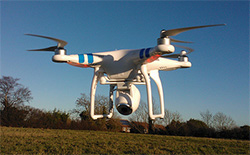 I think the release of the DJI Phantom (Amazon aff link) has played a big role in bringing real estate aerial photography and video to the forefront. It has many benefits that make it a perfect fit for real estate photographers. A lot of quadcopters that you can purchase online come in a kit form. You have to assemble which includes soldering of the various components. The Phantom however is delivered ready to fly out of the box. You simply screw the propellers on to the engine shafts and you are ready to hit the sky.
I think the release of the DJI Phantom (Amazon aff link) has played a big role in bringing real estate aerial photography and video to the forefront. It has many benefits that make it a perfect fit for real estate photographers. A lot of quadcopters that you can purchase online come in a kit form. You have to assemble which includes soldering of the various components. The Phantom however is delivered ready to fly out of the box. You simply screw the propellers on to the engine shafts and you are ready to hit the sky.
Depending on which version you purchase, you will either strap your own GoPro to the Phantom to handle your photography/video requirements, or it will come with its own camera like the Phantom 2 Vision that is pictured. Regarding costs, the Phantom is actually very cheap for the work it can do. For $1200 you can create aerial photos and video, something that was unheard of just a couple of years ago. You can even purchase the first-gen Phantom (Amazon aff link) for a mere $480 (sans GoPro) if you are really being careful with your budget.
For most real estate photographers, I think the DJI Phantom is probably the best rc helicopter with video camera. The decent footage you get from a GoPro combined with the minimal assembly out-of-box and cheap cost, make it a winner.
What About a Bigger Quadcopter
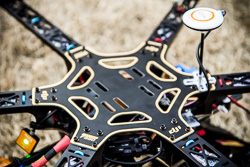 I’ve learned in this business that when it comes to equipment, it’s best to save and buy big. If you buy a crane/jib on eBay because it costs $300 less than a good one from Kessler Crane, the odds of it lasting and producing a result you are after is slim. (Been there, done that.) So when I decide to buy something new, I take a look at what’s available and make a decision that I think will last me through time.
I’ve learned in this business that when it comes to equipment, it’s best to save and buy big. If you buy a crane/jib on eBay because it costs $300 less than a good one from Kessler Crane, the odds of it lasting and producing a result you are after is slim. (Been there, done that.) So when I decide to buy something new, I take a look at what’s available and make a decision that I think will last me through time.
Now, I’m not at all saying that you shouldn’t buy a Phantom because it’s cheap. The Phantom will provide an outstanding result, and because of it’s low cost, there is less damage when you crash. (Notice I said when, not if.) But I made a decision to purchase a copter that could carry a heavier camera than the GoPro. I went with a DJI F550 Hexacopter.
You can buy one of these online from many different retailers. If you want you can get an ARF Kit which means the copter is going to come almost ready to fly. It’ll have all of the parts, you just have to assemble it. (WARNING: Soldering required!) You can also purchase RTF (Ready To Fly) versions from most retailers. They’ll put it together for you, test it, then ship it to you. The end result is you have a hexacopter ready to fly out of the box like you would if you purchased a Phantom. For the record, I chose the ARF Kit version. I love tinkering and building. I also thought it would be beneficial to know how everything works so I can make repairs easily for when I crash. (Remember? When, not if.)
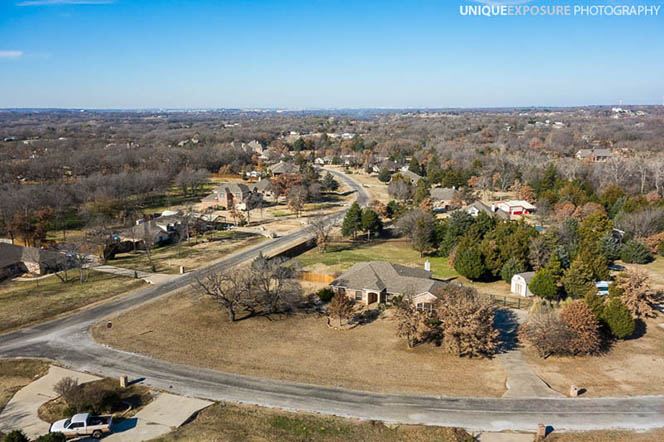
So Why Splurge on the F550
The reason I thought the DJI F550 would be the best rc helicopter with video camera for me, was because of it’s ability to lift heavier weight. I like the GoPro cameras and I think they deliver an outstanding result. But I felt that going a step up and using a Sony RX 100 [or the now-released and updated Sony RX 100M II] (Amazon aff link) would fit my business better. It doesn’t output a distorted, wide-angle image like the GoPro (which can easily be corrected in post-production). It also offers a huge feature during video recording: electronic image stabilization. With the copter vibrating in the air, having as much stabilization help as possible is a benefit for a smooth result.
As with every decision, there are positives and negatives. I will warn you up front that the Sony RX 100 does not do intervalometer shooting. You can’t press a button and have it take a shot every X number of seconds. Instead, you have to hold the shutter down the entire time. This means that to shoot photos from your quadcopter, you’ll have to rig a way to hold the shutter down. (I strap a rubber band around the camera that holds a small pad to the shutter button to engage it.) The DJI F550 setup can also carry a Sony NEX 5/6/7 cameras, but I don’t have any experience with them.
Would I Do It Differently
Yes, thanks for asking! I learned a lot on my journey building the best rc helicopter with video camera that I could. With no prior knowledge of the R/C world, I took it by baby steps. I built the ARF Kit mentioned above and slowly upgraded my F550 to be able to carry the Sony RX 100 camera. Knowing what I do now, I would not build the ARF Kit. Instead I would buy only the parts necessary to build the copter in its upgraded state from the get go. This includes updated arms, motors, ESCs (Electronic Speed Controllers) and propellers. Those pieces all come with the base kit, however they aren’t suitable to lift heavier equipment like the Sony RX 100.
PSA
These quadcopters/UAVs/drones are not toys. They can be extremely dangerous. Some of the propellers are carbon fiber and they can literally slice your finger off. Make sure you prepare yourself properly for piloting a quadcopter. Again, purchasing the WLToys V929 grumpy beetle is probably the best thing you can do. You don’t want to spend a lot of money on a bigger quad, only to crash it and have to immediately replace parts. It can be very discouraging, especially if you don’t have the budget to allow for replacement costs.
Resources
If you are seriously thinking of attempting aerial real estate photography and video, I would highly recommend doing plenty of research. Join the Facebook groups below and start reviewing issues people have and what they do to fix them:
I also would recommend checking out MultiCopterBuilders.com for parts. Richard sells a lot of awesome parts for upgrading UAVs.
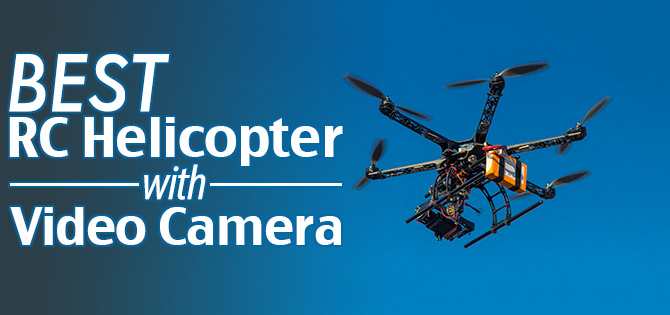
Did you consider the DSLRPros.com upgraded Phantoms before you purchased the F550? They upgrade just about everything to professional levels and the end result is an extremely stable and easy to fly photo rig. It only carries the GoPro 3 but from what I’ve seen it produces extremely good photos with the great stabilization the upgraded Phantom offers. Oh, and no icky electronic image stabilization needed.
Your thoughts on this as I’m about to get into the Aerial Photography business and this is the primary drone I’m considering as my first pro rig.
Steve,
No I didn’t for a second consider a Phantom, no matter the upgrade. However I would now consider it due to its lower cost and replaceability. With the risk always there of the copter crashing, it’s easier on the wallet to replace a Phantom! (And just for clarification, the Sony RX-100 has OPTICAL image stabilization…it’s not electronic/digital.)
Get a Phantom, learn to fly it, and start producing a good result with it. Then upgrade if you need to down the line.
Good luck Steve!
Lance,
Where did you get your UAV or UAS license? Everywhere I look is more for Gov’t or higher grade aviation license, not the self test you noted above. Thanks!
~Meghan
ha – sorry Meghan! That was just me being sarcastic. What I was meaning by that was you will be teaching yourself how to fly, and therefore you will give yourself your own little “license” to fly after practice.
You are very right though in that this is a slippery slope for flying drones for commercial purposes. There are “regulations” in place apparently, but no laws. Technically I believe you can fly commercially right now, but do so at your own risk! You may want to talk to a lawyer (and insurance agent!) first to see if it’s worth it or not. 🙂
Oh!! I am usually good at picking up on sarcasm (it is my fav mode to talk in anyhow)…but sometimes that is lost through the computer. Well, my little angry beetle will be arriving on Monday, so excited to see how many times it takes before I can get a smooth take off and landing. Do you have any idea of the battery life? I seem to see that it might only last about 10 min and then takes quite awhile to charge…may I assume that the larger quads, like the Phantom or your Sony have a longer battery span than 10 min?
10 minutes is plenty of time as you’ll probably want a break anyway. 🙂 The little beetle is pretty difficult to fly, so it might be frustrating at first. Keep practicing at it though!
Battery Life isn’t very good on any of the quads right now. The newest Phantom has the longest flight time that I know of, around 25 minutes I believe. That’s a lot of time to be in the air. When you go to a bigger quad, you use a bigger battery, but it’s more weight…so you don’t end up gaining much time on battery. My DJI F550 that I built only stays in the air for 12-15 minutes.
We have set up a mount and activation system for the Sony RX100ii on a Phantom. Get high quality stills on a small easy to use machine. We use it for real estate for much better results then a GoPro. Check out http://dronersystems.com/
Thank you for sharing! Great idea – the Sony RX100 line is outstanding especially with its built-in video stabilization!
I took a chance and bought the Mavic Pro and I can’t tell you how easy it is to fly and how in a few minutes I can have it up in the air, portability is incredible. No realtor has complained about the photos or video, only great compliments. With that being said, I would also purchase a Phantom 4 Pro, which I have heard uses the same sensor as the Sony Rx100 and can handle the wind far better than my baby Mavic Pro. Having 2 drones for your business will give you piece of mind if one has a problem. What the Mavic allows me to do is be in places without being noticed that I have a drone and remote control in my hands, and it’s much quieter. I can send it up quickly without drawing attention, in safe areas of course and get great shots fast. The remote is so small people think I’m playing a video game. LOL… Be sure to purchase ND filters for your drone!!!
Great tips Jeff!